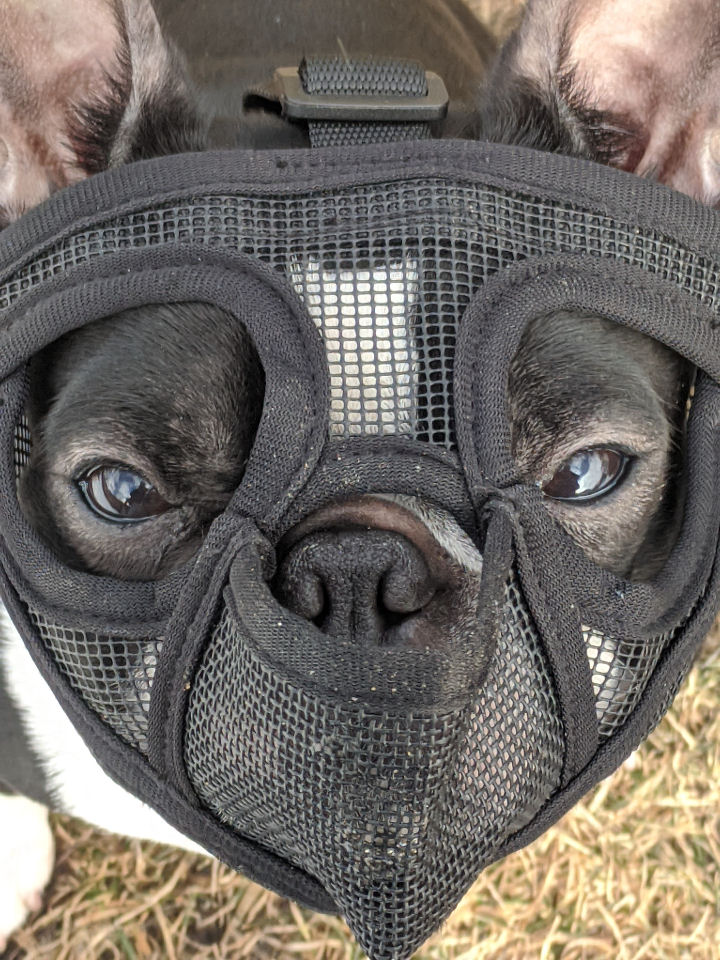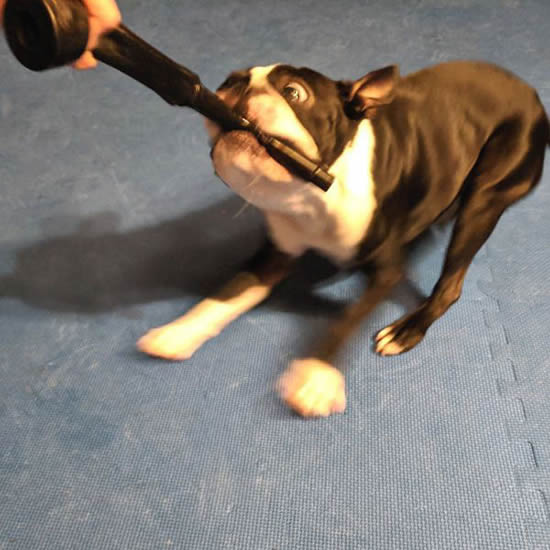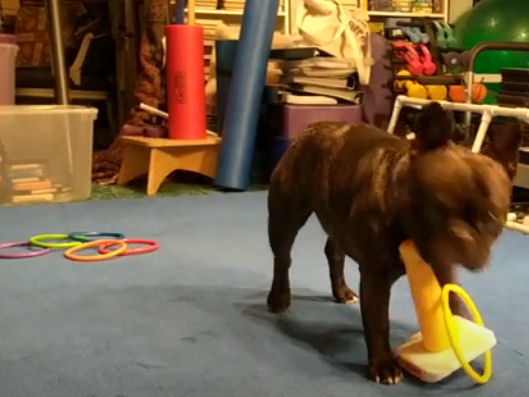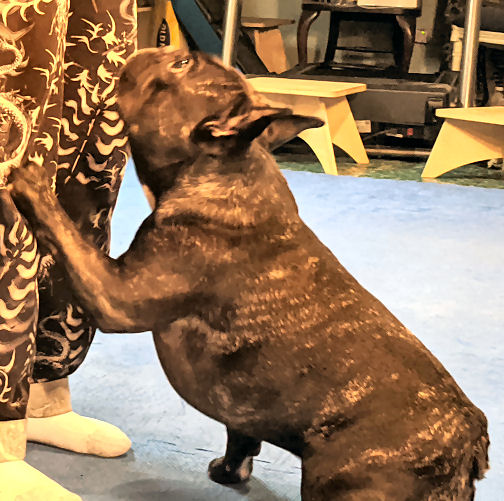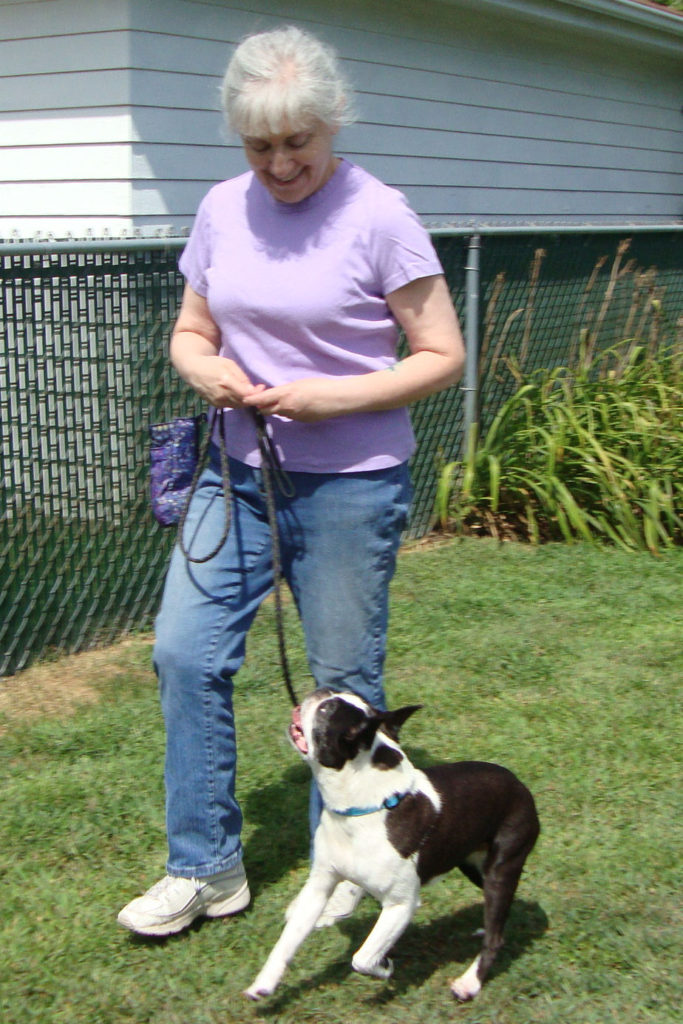The “Find It!” Dog Game hits all the right buttons for most dogs. They are, by nature, hunters. Sniffing for “prey” is something just about every dog does. It’s a part of their instinct to seek, even though our pets don’t have to worry about where the next meal is coming from. This is one instance where training really does use a behavior that’s natural for your dog!
Since this game encourages wandering and sniffing, most dogs love it and take to it like a duck to water. It’s a variation on “nose work” dog sports. In AKC Scent Work, “dogs search for cotton swabs saturated with the essential oils of Birch, Anise, Clove, and Cypress. The cotton swabs are hidden out of sight in a pre-determined search area, and the dog has to find them. Teamwork is necessary: when the dog finds the scent, he has to communicate the find to the handler, who calls it out to the judge.”
Any Scent Will Do
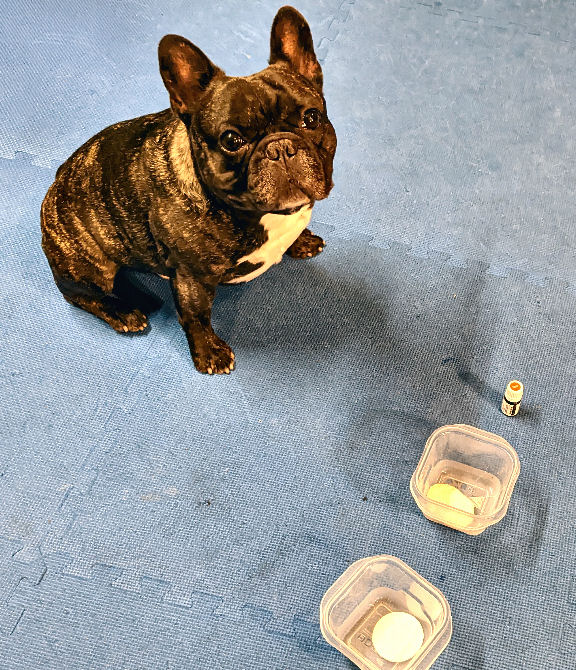
Unless you’re planning on going into competition with your dog, you don’t have to use those scents. There are commercially-available scent-work kits, but you don’t need the “official” items to get started. In fact, Hope used plain old cotton rounds used for makeup, and some “unofficial” nutmeg essential oil to start playing the game with Torque.
He loved it right away. Like most dogs, Torque has an aggravating habit of sniffing anything and everything in the yard. Finding a game that lets him use that skill, instead of being discouraged from it, was heaven-on-earth to that dog. After all, dogs’ ability to discern odors is thousands of times better than ours. We can’t really know how dogs perceive the world by scent. But we can make the experience richer, useful, and fun for them.
Get Started
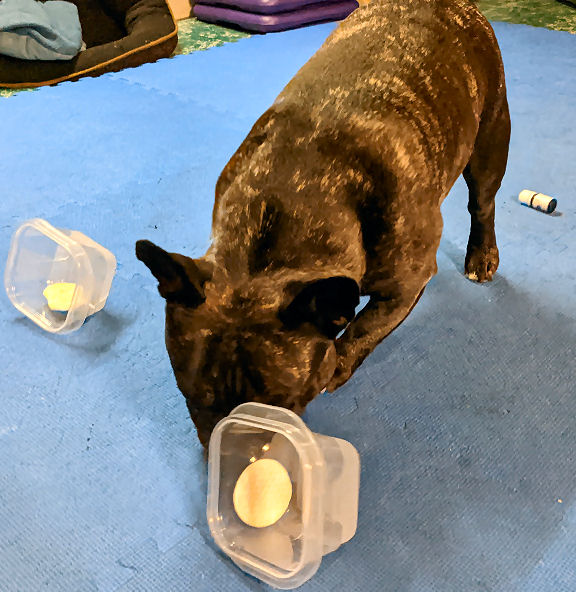
Any training game you play with your dog starts with familiarizing the “stuff.” In this case,put a couple drops of the oil on the cotton round. Then hold the round at your dog’s nose level, a few inches away. Unless your dog hates the scent, they will move forward to sniff the round. Dogs just can’t help themselves. They’re compelled to check out new things with their noses.
When your dog sniffs, click and reward, saying “Good Find It!” or whatever phrase you’re going to use. After a few repetitions, your dog will figure out his “job” is to sniff the thing. It’s probably one of the easiest games to teach – especially for dogs who love sniffing.
Hide and Seek
Once your dog associates the smelling with getting rewarded, you can try moving it around. At first, just alternate hands or move one or two steps. If your dog eagerly follows the round, you’re ready to move to the next phase of the game.
At first you’ll “hide” the cotton round in plain sight. If you have another person around, stand with your dog facing away from the area the scent will be hidden. Let your dog sniff it, click and reward, then give it to the other person to “hide.”
If your dog has shown a tendency to want to eat the cotton round, or take it into mouth, have the person put it under something porous enough for the dog to get the scent, like a basket. If you’re using a box, you may have to punch some holes in it at first for the dog to understand the game.
Once the round is hidden in plain sight, a few feet away, turn around with your dog and encourage them to “Find it!” When they do, click and reward.
Degree of Difficulty
As your dog understands the game and becomes more proficient, move the scent higher. Or put it in a covered container. “Containers” is one of the tests for dogs in Scent Work competition, and those are closed, plastic containers. Dogs’ noses are powerful enough to “Find It!” even if it’s buried, outdoors, or even in a vehicle. Scent Work is the basis for the work of law enforcement sniffer dogs. Different circumstances, different smells. But essentially the same kind of game.
If your dog is a sniffing prodigy, you’ll probably enjoy doing Scent Work in competition. There are several different organizations who hold trials. You can see what group is most active in your area and look for classes near you.
The “Find It!” game quickly becomes a favorite for most dogs and people. It’s using the dog’s natural instincts and turning it into a game you can play together. Expand the game to different smells, different places, and different elevations to keep it fresh and fun.

